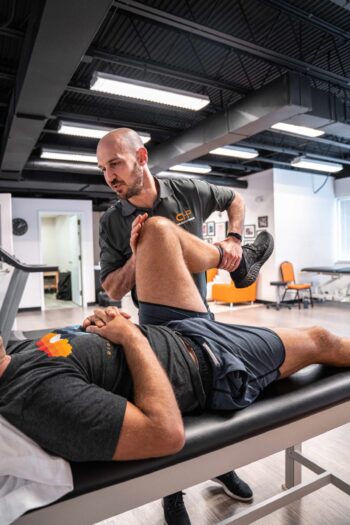“I think my hips are out of alignment.”
“My pelvis feels shifted.”
“My sacrum must be twisted.”
These are phrases we hear all the time at Cohen Health and Performance. If you’ve ever said something similar—or been told this by a friend or provider—you’re not alone. The idea of being “out of alignment” is a commonly held belief and often used to explain nagging pain or movement issues. But here’s the truth:
Your body is built to move—and that includes your pelvis.
Understanding “Misalignment”
Let’s clear something up: your pelvis, hips, and sacrum are supposed to move. With every step you take, your pelvis naturally rotates, shifts, and adapts. This isn’t dysfunction—it’s a sign of a healthy, dynamic system.
The sensation of being twisted or “off” often comes from the body favoring one side over the other. It’s not that you’re structurally broken. It’s that your movement patterns are biased—and over time, those biases can create imbalances that feel like misalignment.
Why Do We Get Stuck in These Patterns?
Most people have a natural tendency to favor one side, especially the right. Why?
- We’re mostly right-handed
- We carry kids, bags, or groceries on the right
- Even society is designed for right-handers (think door handles, tools, etc.)
This daily repetition subtly trains our bodies to prefer the right side. Over time, this can show up in the gym—like when one leg feels stronger during a leg press—or in daily life, where you feel “off” or stuck on one side.
But here’s the important part: you don’t need to be cracked, popped, or adjusted repeatedly to fix it.
You need a plan to address the underlying cause.
A Smarter Approach to Feeling “Realigned”
One of our go-to exercises at Cohen Health and Performance (see the video at the beginning for a demonstration) is a drill that retrains how the body pushes off the right side to shift weight to the left. Here’s what it looks like:
- Lying on your back with your right foot on a wall
- Left leg lifted with the hip in flexion
- Pushing through the arch of the right foot to activate the right glute
This simple but effective movement mimics what your glute should do during walking, sprinting, or cutting—helping you get off the right side and balance your body’s movement patterns.
Done consistently, drills like this can help you:
- Reduce your reliance on constant adjustments
- Improve strength and control in underused muscles
- Feel more balanced and symmetrical in daily life and workouts
Physical Therapy That Addresses the Root Cause
At Cohen Health and Performance, our goal isn’t just to “fix” you temporarily.
We help you understand why you feel off in the first place—and give you the tools to stay better aligned through movement, not manipulation.
Whether you’re looking for physical therapy in Bethesda or physical therapy in McLean, our team specializes in performance-based care that empowers you to move better, feel stronger, and stay pain-free.
Ready to Stop Chasing Adjustments?
If you feel like your body is out of alignment—or you’ve been told that it is—it’s time to dig deeper. Contact us today to schedule an evaluation. We’ll help you understand what’s really going on and create a plan that actually sticks.





